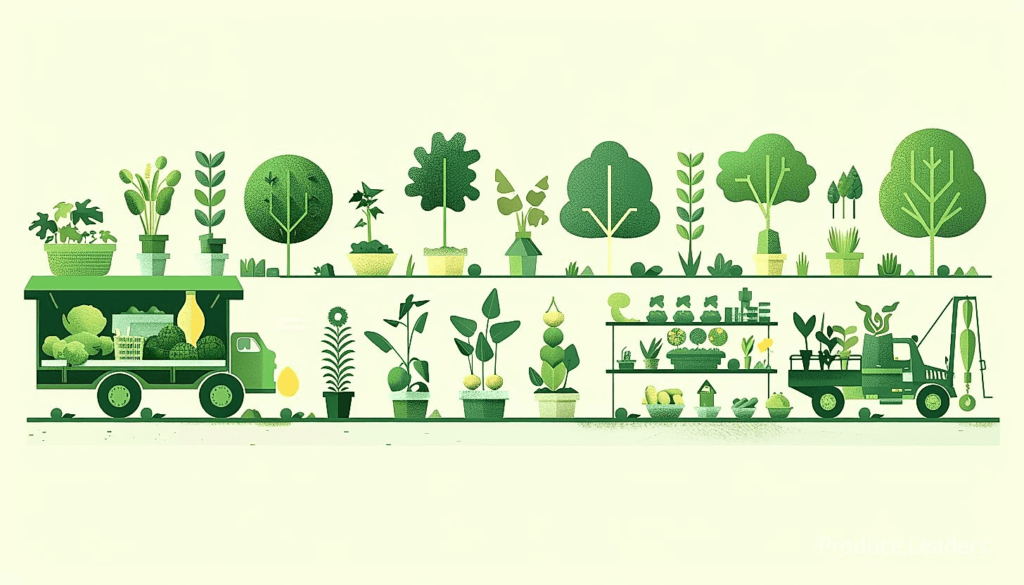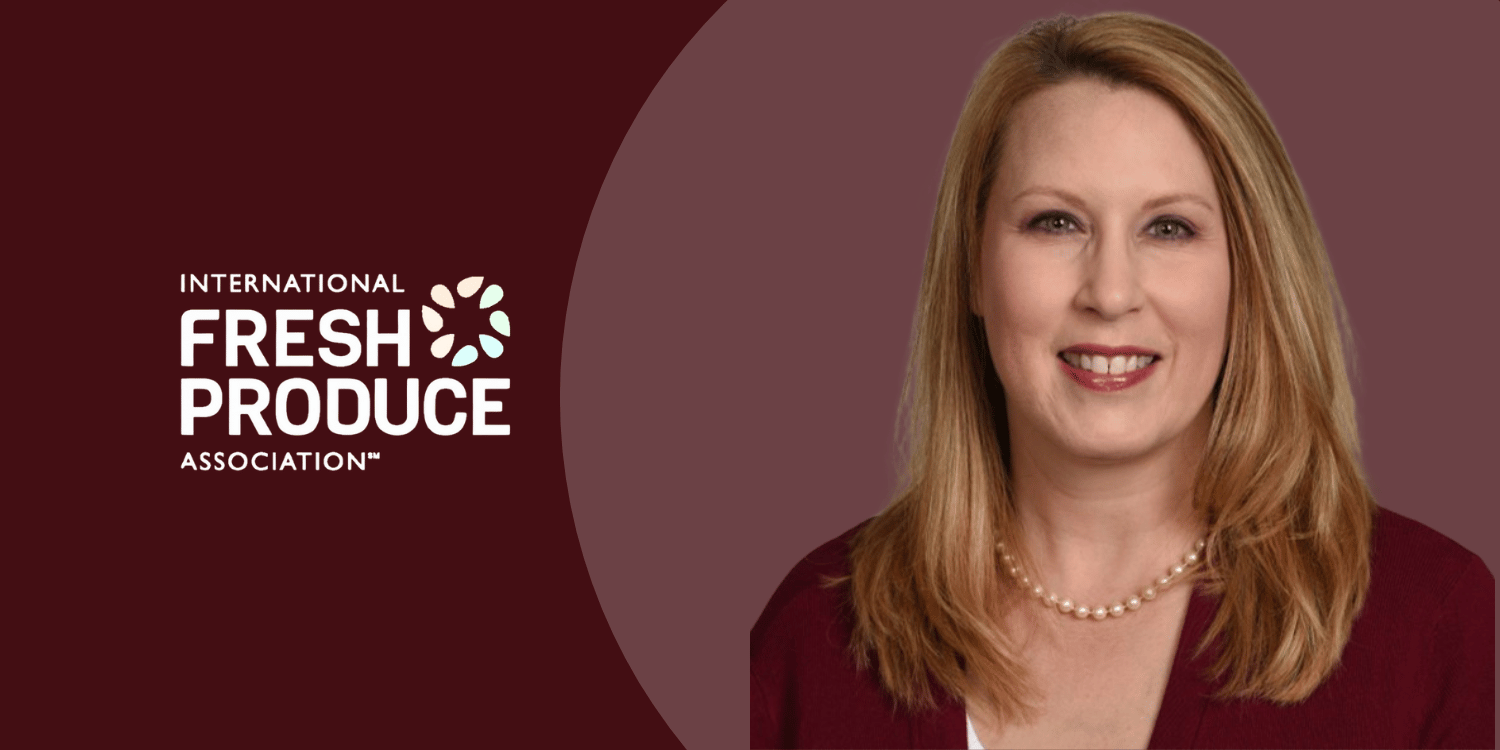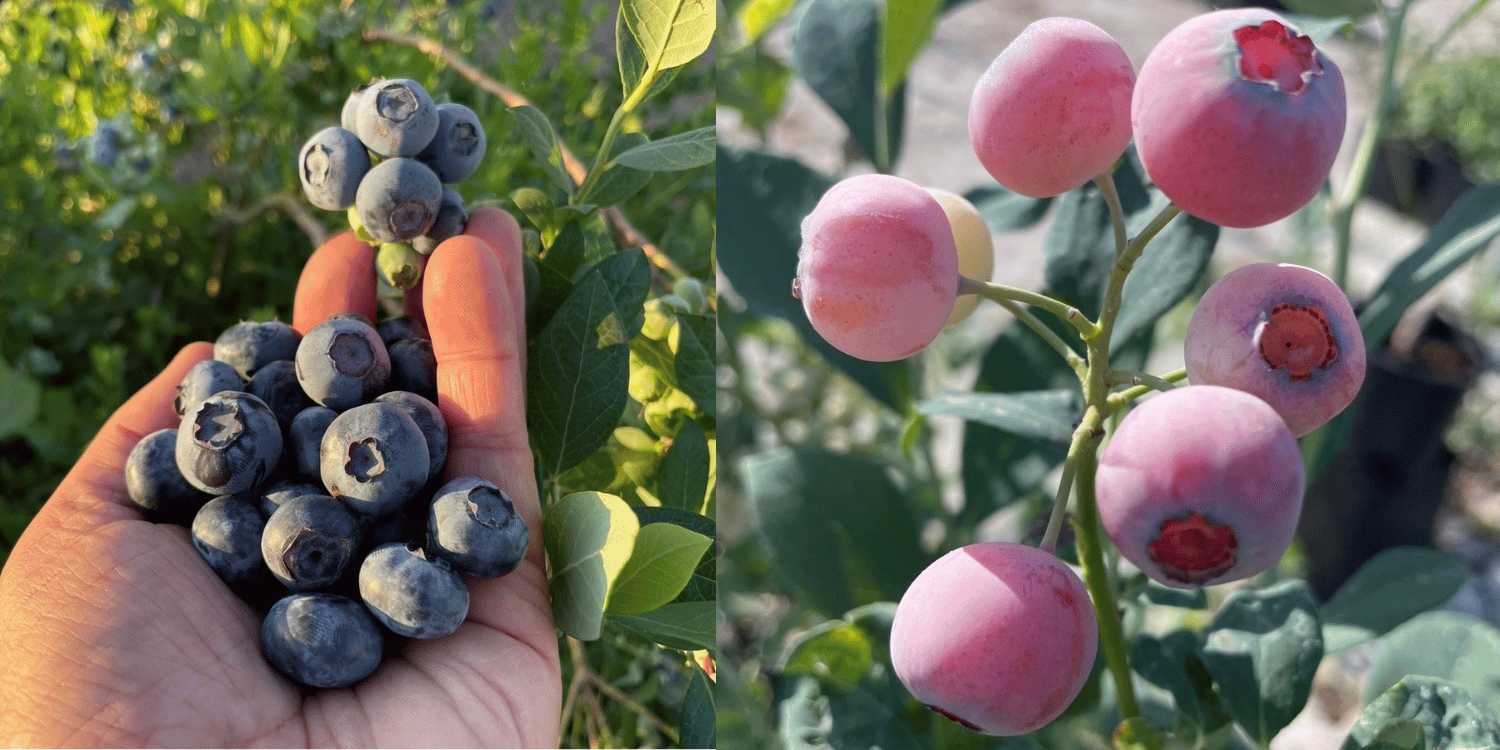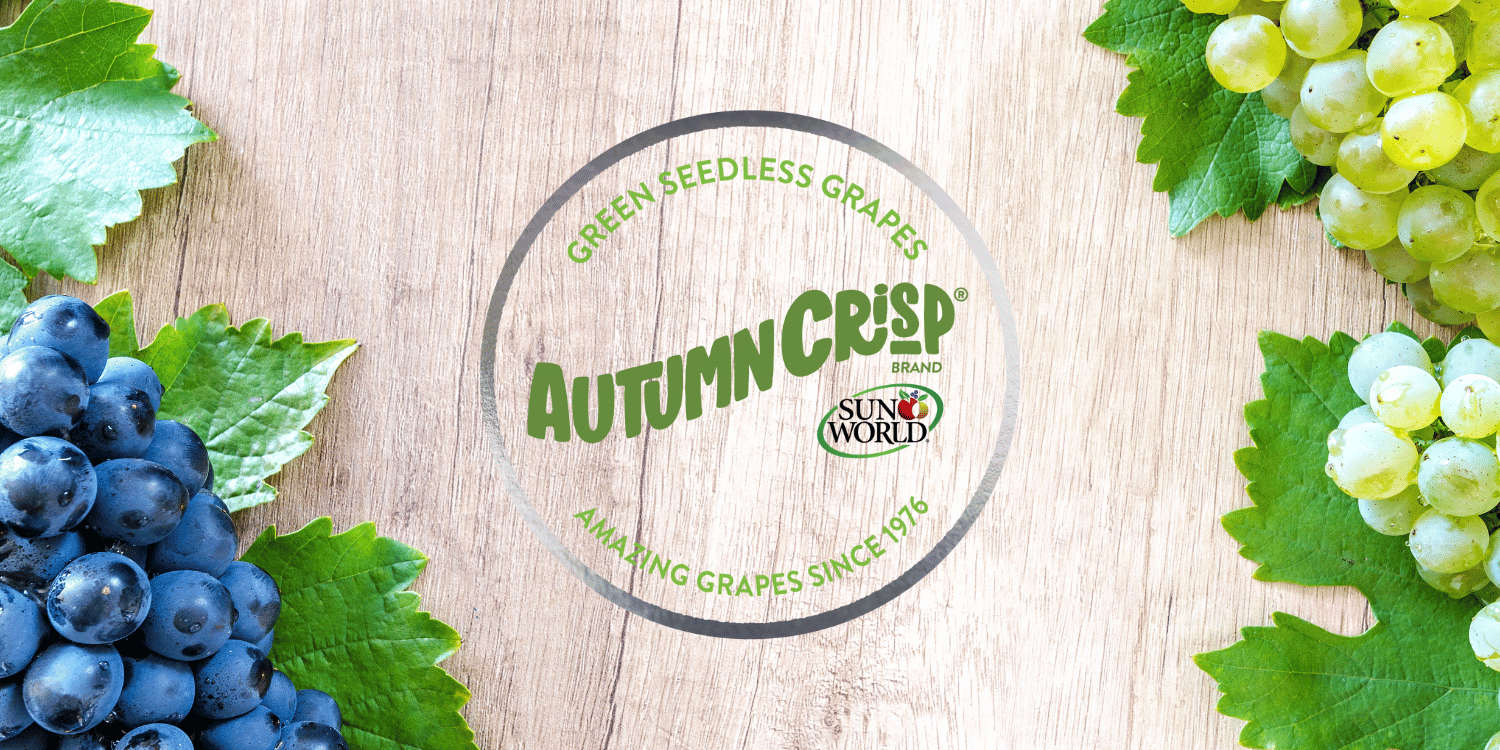The journey of produce from seed to shelf begins with plantation, where seeds are sown in nutritious soil under specific conditions conducive for their growth.
After germination and growth, the produce is harvested at the right time to ensure quality and nutritional value.
The next step is post-harvest handling, which involves cleaning, sorting, and preparing the produce for storage.
The produce is then stored under controlled conditions to prevent decay and maintain freshness.
Transportation is the next phase, where the produce is moved from storage to retail markets efficiently to minimize spoilage.
Lastly, the produce arrives at the retail shelf, ready to be purchased by consumers, marking the end of the seed-to-shelf journey.
- The produce journey starts with the seed initiation process.
- Plantation is a key phase in the provision of quality produce.
- Timely harvesting and post-harvest handling affect crop quality.
- Controlled storage conditions preserve the quality and longevity of produce.
- Efficient transportation methods and retail mechanisms ensure quality upon arrival.
While the journey of produce from seed to shelf has been outlined, we also aim to explore related essential topics that impact this process.
The health of the soil, the role of weather in crop growth, the use of organic versus conventional farming methods, among other topics, all contribute significantly to the produce’s path. Understanding these factors can offer a more comprehensive perspective on how our fruits and vegetables make their way to our tables.
By continuing to dig in into these tied-in topics, we can further grasp the complexities of our food production system. Let me tell you, stick with us as we explore these interconnected elements and appreciate the journey of our daily produce even more.
Contents
- What Initiates the Produce Journey?
- How is Plantation Conducted?
- Importance of Timely Harvesting
- What is Post-Harvest Handling?
- Role of Storage in Produce Quality
- Importance of Controlled Storage Conditions
- Transportation in Produce Journey
- How is Efficiency Ensured During Transportation?
- Arrival of Produce at Retail
- Final Stop: The Retail Shelf
- The Bottom Line
What Initiates the Produce Journey?
In Short: The journey of produce starts with the choice of a seed, its planting, and careful nurturing while safeguarding against potential threats. Post-harvest, the produce undergoes processing steps like cleaning, sorting, packaging, and transportation to reach your local supermarket.
Every item of produce in your local supermarket begins its journey in a field, a greenhouse, or even an orchard. This is no great secret, is it?
Though we may often forget, the seed plays the most fundamental role in this journey. It is the epitome of potential—a tiny life form lying in wait for the right conditions to spur it into growth.
But what are these right conditions? To answer that, let’s dive deeper into the world of horticulture.
Before you can even think about planting, the first step is to choose the right seeds. This is a critical stage that dictates the overall health, quality, and yield of the entire crop. This is often based on various criteria, which include:
- Resilience to pests and diseases
- Adaptability to various climatic conditions
- The quality and taste of the produce
Once you have your ideal seeds, it’s time to plant them. Depending on the type of crop and the location, this can either be done directly into the ground or in controlled environments like nurseries.
Next up is nurturing the young seedlings as they start to grow. To reach its full potential, each plant requires meticulous care, including optimum sunlight, water, and nutrients.
Simultaneously, farmers also need to guard their crop against threats. These could include anything from pests and diseases to adverse weather conditions.
Meanwhile, did you know that crop rotation plays a crucial role in preserving soil health? Yes, it’s not just about getting the crop into the ground and waiting for it to grow!
Once the crops mature, it’s time for harvesting. Do you ever stop to think about what that involves while you’re walking through the supermarket aisles?
Well, it’s a delicate process involving labor, knowledge, and often, machinery. It needs to be done at just the right time to ensure that the produce is at its best when it reaches you, the consumer.
After the harvest, the journey still isn’t over. The produce has to be processed, which could include cleaning, sorting, packaging, and transporting.
This entire journey, starting from a tiny seed and culminating in a fresh item on the supermarket shelf, is a cooperative dance between humans and nature.
If anything, isn’t it more of an intricate ballet, choreographed over hundreds, if not thousands, of years? And just like the principal dancer, the humble seed is the star of this entire performance.
How is Plantation Conducted?
In Short: Plantation involves multiple steps ranging from site selection and land preparation to seed selection, sowing, and irrigation, all of which require careful planning and execution. Once planted, the crops are meticulously monitored and cared for, utilizing various methods including fertilizers, pesticides, and natural strategies like crop rotation to ensure their optimal growth until they reach maturity and are ready for harvest.
The journey of produce begins with plantation, a process that requires meticulous planning and execution. It’s a step that might seem straightforward, but is it really?
One of the first steps is site selection. The chosen area has to be well-suited for the type of plant that will be cultivated. Factors like the climate, soil type, and water availability play essential roles in the success of the plantation.
In the next phase, the land preparation occurs. This step can include ploughing the land to make the soil easier to cultivate. Can you imagine how laborious this task must be?
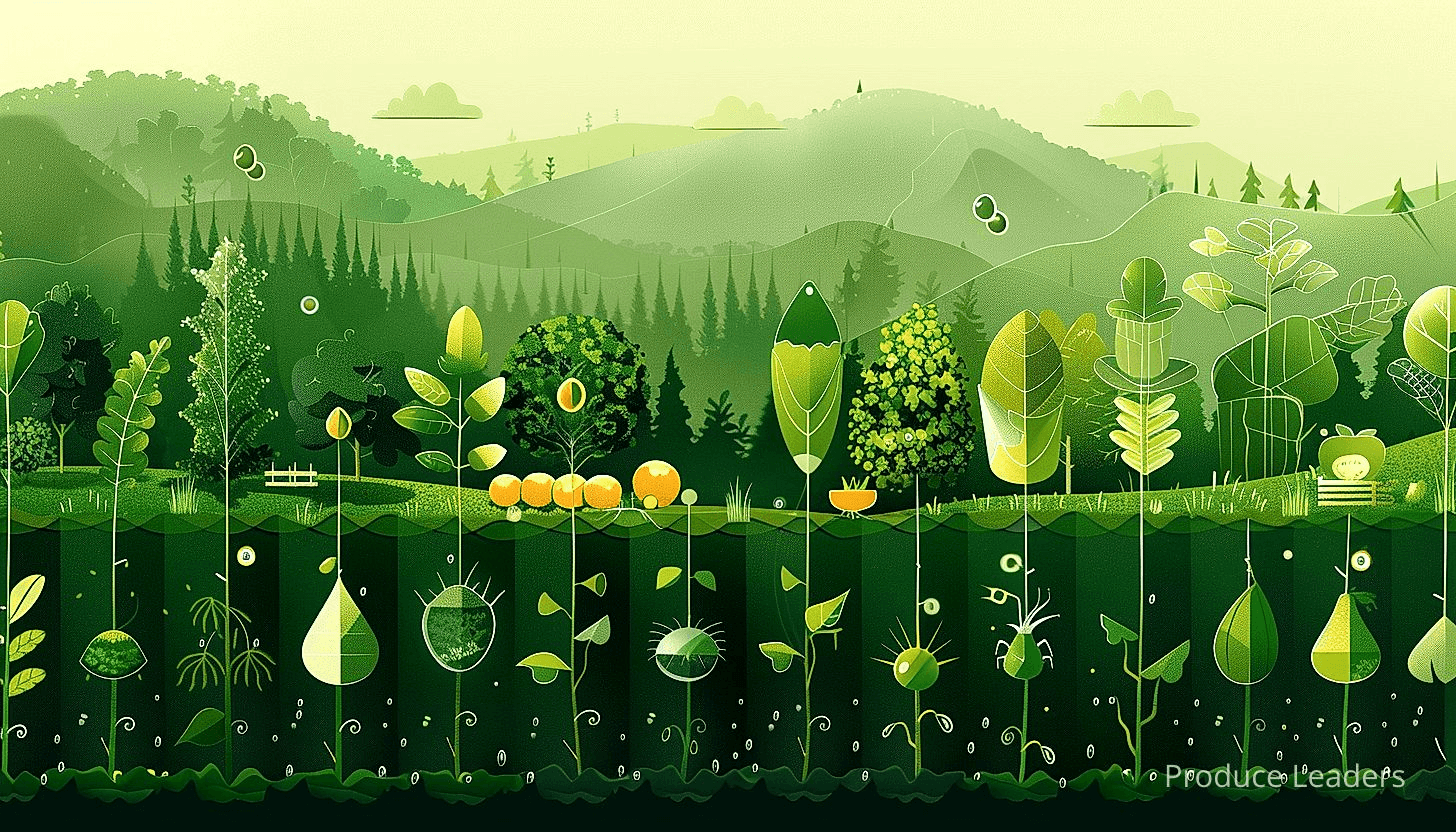
This step also includes dividing the land into sections as per crop requirements. The land is also cleared of debris and rocks. It’s all in the details, isn’t it?
Now, here are the main steps in the actual planting process:
- Seed selection: The seed quality significantly impacts the growth of the crops. The better the seeds, the healthier the crop yield will be.
- Seed sowing: Different crops require specific sowing methods. Some seeds are sown directly into the field, while others start their life in a nursery bed, only to be transplanted later.
- Irrigation: After sowing, the seeds require a suitable amount of water. Too little or too much can adversely impact the growth.
Are you starting to see the complexities of the plantation?
Once planted, the crops are then well-taken care of by farmers. This may entail regular checks for signs of disease or pests. After all, the health and growth of the plant is the fruit of their labor, quite literally!
Fertilizers and pesticides play significant roles too. Organic or synthetic, these help in keeping the plants nourished and protected, respectively. Do you recall what pesticides do exactly?
Organic farmers especially take a more natural approach. They use strategies like crop rotation and organic pesticides to maintain the harmony of the ecosystem. Fascinating, don’t you think?
Finally, after months of dedication and hard work, the crops reach their maturity stage. This is when the produce is ready to be harvested. Don’t forget, timing is key for this step.
Pro Tip: For a successful plantation, meticulous planning is essential— including selecting a well-suited site, preparing the land, choosing quality seeds and using appropriate sowing methods, and maintaining adequate irrigation.
Post the harvest, the cycle starts all over again for the next crop. Isn’t it astounding how this cycle has been in practice for centuries?
Now that we’ve traced the “seed” part of the journey, our next stop is the “shelf”. And isn’t that an exciting part of the journey as well?
Importance of Timely Harvesting
In Short: Timely harvesting is critical as it enhances produce quality, affects shelf life, and ensures food safety by reducing exposure to diseases and pests. Additionally, it impacts the economic efficiency of the growers, with properly timed harvest reducing waste and maximizing revenue.
The moment of harvest for any crop is a delicate and meticulously calculated decision, isn’t it? It requires a depth of knowledge and appreciate for the lifecycle of the produce.
There is a distinguishing factor between underripe, perfectly ripe and overripe produce. But do we ever consider the impact of timely harvesting?
Consider this: Timely harvesting not only enhances the produce quality but also significantly affects the shelf life. Letting fruits and vegetables mature on the plant for too long can be as detrimental as harvesting them too early.
Now, let’s look at some reasons why timely harvesting is so important in the journey from seed to shelf.
- The first reason revolves around quality. Harvesting produce at the right time ensures optimal taste, texture, and nutritional value.
- Next, is food safety. Timely harvesting reduces exposure to pests and diseases, thereby ensuring safer produce for consumption.
- Lastly, economic efficiency plays a role. By harvesting timely and reducing waste, growers can maximize their revenue.
Imagine savoring a perfectly sweet and juicy peach, knowing it was picked at the peak of its ripeness. Isn’t the experience all the more enjoyable? In that moment, you’re reaping the benefits of timely harvesting.
The quality of produce begins at the moment of harvesting. A farmer must master the art of identifying the precise moment when the produce has reached its peak. This moment is when the produce is brimming with flavor and nutrients.
Are you aware that if harvesting is delayed, produce may become overripe? Overripe fruits and vegetables can lead to a decline in nutritional value. Not only that, but they are more susceptible to being bruised or damaged during transport.
Moving on to the safety aspect. When crops are left in the fields too long, they become more susceptible to pests and diseases. This is especially true when weather conditions are less than ideal. Hence, timely harvesting is essential to ensure safer produce for the final consumer.
Finally, let’s consider the financial implications. A reduction in post-harvest losses directly impacts a farmer’s income. By harvesting at the right time, growers not only ensure better produce; they also increase their chances of financial success.
Every fruit and vegetable telling its own story from seed to shelf. Yes, from the field to the fork, each part of the journey is critical. But as we have seen, the success of this journey relies heavily on the timing of the harvest.
What is Post-Harvest Handling?
In Short: Post-harvest handling refers to the process of preserving, storing, and preparing crops for market after harvesting, including cleaning, sorting, packing, and storing. This is crucial to minimize damage, maintain crop quality, and ensure the produce reaches consumers in the best condition.
At the heart of the journey from seed to shelf, one crucial phase often gets overlooked by most consumers – the post-harvest handling process. Ever wondered what happens right after all those fresh fruits and vegetables get picked from the field?
Post-harvest handling refers to everything a producer does to preserve, store and prepare crops for market after they’re harvested. Sounds straightforward, right?
Though it may seem simple, this stage is of utmost importance, and requires meticulous care and effort. Maintaining the product’s quality throughout the handling journey forms the basis of this process.
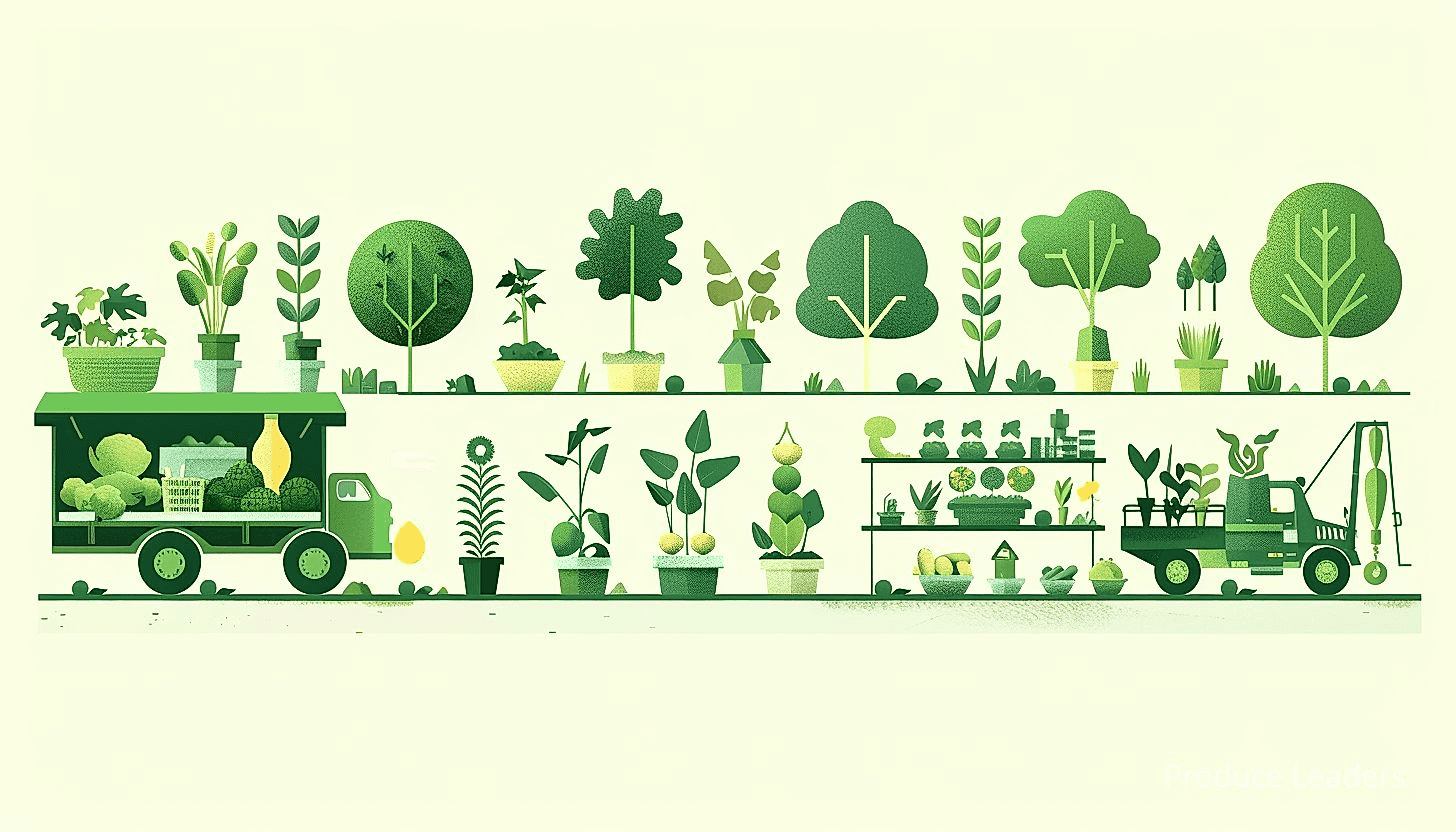
Right after the produce is picked, producers need to clean and sort them based on size, shape, color, and quality. Can you guess what the next step might be?
Then comes packing the produce safely for transport. This is an important step because it’s here that potential damage from mishandling can occur.
When we say handling, you might ask, what exactly does that include?
Well, here are some of the essential steps involved in post-harvest handling:
- Cleaning: Removing dirt and pests.
- Sorting and grading: Categorizing produce based on quality and size.
- Packing : Making sure the produce is securely placed for transport.
- Storing : Providing optimal conditions to retain freshness.
Don’t forget, all these steps can vary significantly based on the type of produce and the specific requirements they have. After all, a tomato has different post-harvest handling process than say, an apple.
Want to know something interesting? Most of the losses in quality and quantity of agriculture products occur during the post-harvest handling process. Can you believe that?
This is why it’s crucial to minimize damage and maintain the quality of the crops at this time. So much of this process depends on knowing the specific needs of each type of produce.
Important: Post-harvest handling refers to everything a producer does to preserve, store and prepare crops for market after they’re harvested, which includes cleaning, sorting, packing, and storing produce, and these steps can vary significantly based on the type of produce and their specific requirements.
The goal? Making sure that the harvested produce reaches you – the consumer – in the best possible condition. After all, who likes a bruised apple or a squished tomato?
Next time you enjoy a crisp, fresh salad or a juicy piece of fruit, remember the post-harvest handling process that made it all possible. Pretty impressive, don’t you think?
Role of Storage in Produce Quality
In Short: Storage plays a critical role in maintaining the quality of produce post-harvest by influencing shelf life and nutritional value. Efficient storage, properly monitored and adapted to individual produce needs, impacts factors like temperature, humidity, light, and airflow, which are key in preventing spoilage and disease development, thus ensuring freshness and durability.
The journey of produce from farm to fork doesn’t end at harvesting.
Storage plays a crucial role in maintaining the quality of produce once it leaves the farm.
Ever thought about why certain fruits and vegetables don’t last long after you bring them home from the supermarket?
The answer to that largely hangs on the methods used to store them post-harvest.
Proper storage methods can significantly extend the shelf life of fresh produce and determine how much of the nutritional value is retained.
Effective storage not only keeps our food fresh but also reduces waste by preventing spoilage- a concern of every conscious consumer.
Now, some might wonder, what exactly happens during storage that affects the quality of our produce?
Here are some key aspects to consider:
- Temperature: Different produce require different storage temperatures.
- Humidity: Just as temperature, the levels of humidity can affect produce quality.
- Light: Light can catalyze certain reactions in some fruits and vegetables.
- Airflow: Adequate ventilation can prevent the accumulation of harmful gases.
Couldn’t all these factors affect the natural ripening process of produce?
Indeed, not only that, but they can also instigate the development of diseases or allow pest infestations.
For instance, apples stored at wrong temperatures may result in chilling injuries, or tomatoes kept with poor ventilation could develop mold.
So it’s evident that storage conditions need to be strictly monitored and tailored to individual product needs.
That makes sense, doesn’t it?
After all, wouldn’t we get uncomfortable if we had to stay in an environment that’s too warm, cold, or humid?
Therefore, it is safe to say, effective storage plays an integral role in maintaining the quality and durability of our fruits and vegetables.
It keeps our produce fresh, nutritious, and free from disease.
So next time when you’re at the supermarket, remember there’s more to that fresh apple or vibrant pepper than meets the eye.
Behind each piece is a journey, with the process of storage playing a pivotal role in bringing you the best quality product.
Importance of Controlled Storage Conditions
In Short: Controlled storage conditions, managing factors like temperature, humidity, and air composition, play a crucial role in maintaining freshness, appeal, and nutritional value of produce, from post-harvest to sale. Poorly managed storage leads to quality and safety issues, while correctly monitored conditions ensure healthy, high-quality fruits and vegetables for consumers.
Ever wondered the sequence of events a carrot or lettuce goes through after harvesting and before reaching your dinner plate? Well, controlled storage is a significant link in that chain.
It does more than just providing a holding area for produce. Every second that your favorite fruits and vegetables spend in storage is crucial to their quality.
Why exactly so?
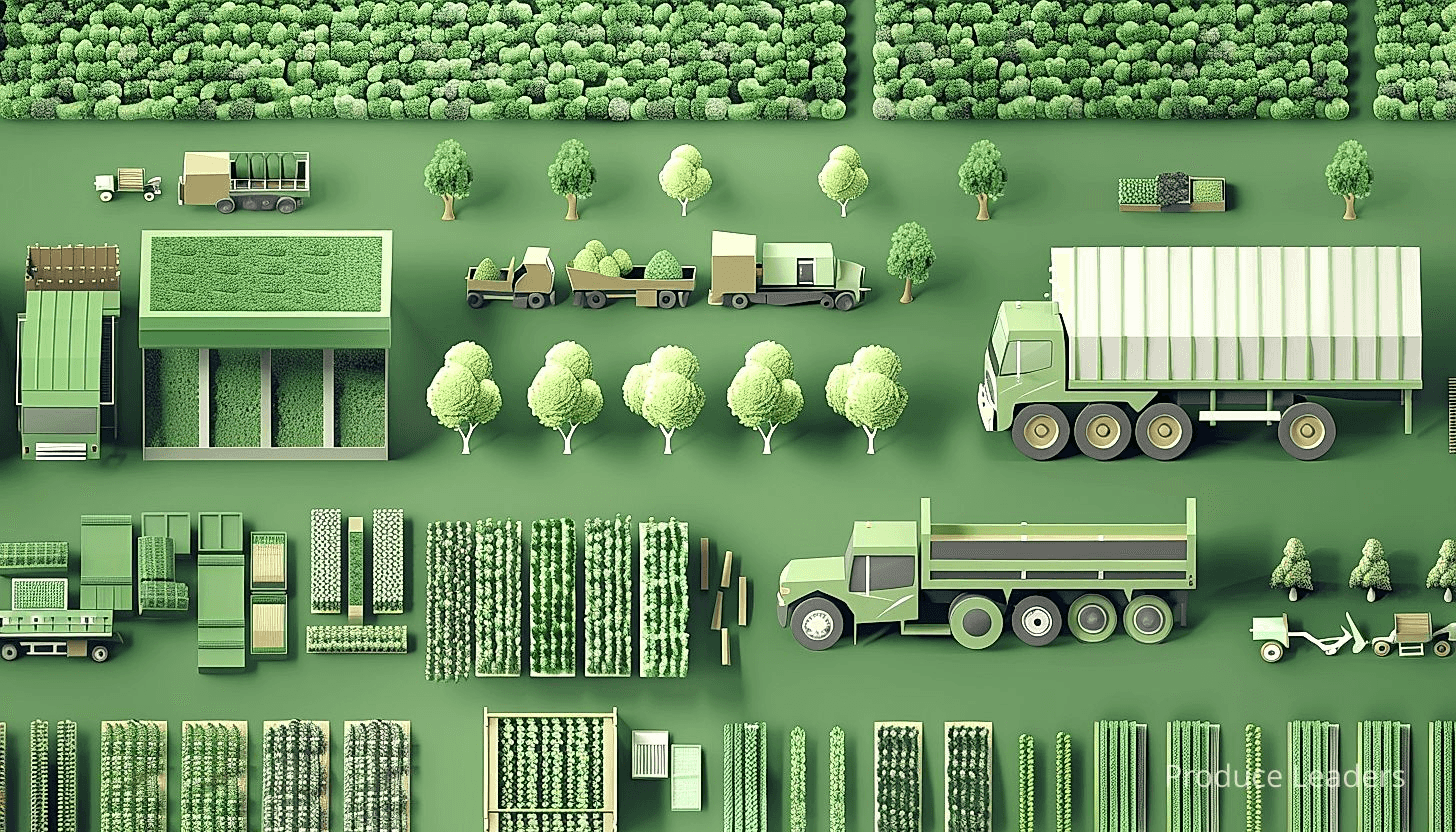
Because it’s in these spaces that their continued life ensues, their natural ripening and consequently, their aesthetic appeal and nutritional value. Controlled storage conditions aid in regulating the shelf life and maintaining the integrity of produce.
And what does this mean for you as a consumer?
It simply means that the apples you enjoy remain crisp, the bananas ripe without over-ripening, and the lettuce keeps its fresh color, all until you’re ready to consume them.
Now, think about fresh produce in a grocery store.
Surely, it has been transported, possibly over long distances, and stored for some time.
Let me tell you, how does it stay fresh?
Controlled storage conditions employ technology to maintain an environment that can slow down the natural decay of these items, ensuring you still get high-quality and fresh produce. Do you see the importantity of controlled storage now?
Controlled storage conditions need to be well-managed because they deal with a variety of produce, each requiring its unique set of conditions.
Imagine the catastrophe that might result from storing tropical fruits at temperatures suited for temperate fruits, the possible effect on taste, texture, and appearance!
Correctly managing these conditions is not only important for produce quality but also its safety.
Controlled storage conditions help prevent the growth of harmful bacteria on the produce, hence minimizing foodborne illnesses.
How exactly is all this achieved? Let’s break it down.
Here are some factors controlled in storage facilities:
- Temperature – Different produce requires different storage temperatures
- Humidity – Maintaining appropriate humidity levels helps preserve texture and freshness
- Air Composition- Atmosphere with controlled oxygen, carbon dioxide, and ethylene can impact the fruit’s taste, texture, and color
While it may appear straightforward, maintaining controlled storage conditions demands meticulous attention and expertise.
Slight inconsistencies can result in significant quality and safety issues, causing substantial losses to those in the supply chain, from farmers to consumers.
Pro Tip: Ensure the freshness and safety of your produce by understanding the importance of controlled storage conditions, which maintain the quality and nutritional value of produce by managing factors like temperature, humidity, and air composition.
Let me tell you, whenever you pick fresh produce from your local store, think of the controlled conditions that enabled it to get to your hands.
So intricate, yet significant, isn’t it?
Transportation in Produce Journey
In Short: Transportation plays a crucial role in bringing produce from farms to dining tables, including their cleaning, sorting, and packaging in packing houses. Key elements like speed, handling, temperature management, and well-orchestrated logistics ensure the produce’s freshness, diversity and availability year-round in retail outlets globally.
Ever given a thought to how your edible groceries, such as fruits and vegetables, make their way from farms to your dining table? Or pondered over why certain items are available year-round, irrespective of their growing seasons?
It is not magic, nor is it solely due to advancements in farming technologies or global markets. The crucial player bridging the gap between seeder and feeder is transportation.
Isn’t it impressive how the modern transportation system whisks off products from far-flung farms to bustling markets beyond geographical boundaries? But how does it proceed, what matters in this intricate process?
The transport of fresh produce is a thoughtfully planned operation, meticulously serving the demand for diversity. From the moment the produce are harvested, transportation’s role starts shining through, its importance becoming clear.
First and foremost, the produce are swiftly transported to packing houses in peak condition. These establishments are mainly present near cultivation areas for convenience.
One might wonder about what happens in these facilities. It is here that fresh produce undergoes thorough cleaning, sorting, and packaging, ready for further dispatch.
Let’s explore some key factors that ensure the efficiency of this transport process:
- Speed: Swift transit reduces the time produce spend in transit, maintaining their freshness until market arrival.
- Proper Handling: Careful handling prevents bruises, a significant factor in preserving aesthetic appeal and edible quality.
- Temperature management: Cooling produce to optimal temperatures slows down degradation, extending shelf-life.
Isn’t the orchestration of these elements almost like a symphony, ensuring the efficient delivery of fresh produce?
From packing houses, produce are loaded into climate-controlled vehicles, where the temperature mirrors each product’s specific post-harvest needs. Such specialized vehicles are cherished assets in the transportation fleet, conserving produce quality during transit.
By road, rail, or sea- depending on the destination’s distance, we have multiple modes of transport at our disposal.
The importance of these modes isn’t just measured by the miles they can cover. Each mode’s ability to provide appropriate conditions for different types of produce throughout the journey is of utmost significance.
Does everything end once the produce reach our favourite grocery stores? Not quite.
The transportation factor isn’t limited to just getting these items to the stores. It also ensures they are aptly displayed in retail outlets, always ready to entice you and me.
The journey of transporting produce is a glorious symphony that ensures the globe is treated to a diverse array of fruits and vegetables no matter the season or region.
Indeed, the role of transportation in the produce journey is like the backbone, supporting and bringing to life our every meal.
How is Efficiency Ensured During Transportation?
In Short: Transportation efficiency is achieved through technology investment, including automated tracking and route optimization software, coupled with strict vehicle maintenance. Additionally, strong supply chain partnerships and accurate monitoring of performance data are crucial in improving outcomes and avoiding delays.
The journey from farm to table, specifically during the transportation phase, uncovers many potential efficiency challenges. Attempting to keep the journey of fresh produce as short, swift, and seamless as possible is not a simple task.
Let me tell you, what does the industry do to overcome these hurdles? Investments in technology have come to the rescue by streamlining the transportation process.
The employment of high-tech monitoring systems plays a critical role in maintaining transportation efficiency. Do you realize the importance of real-time visibility?
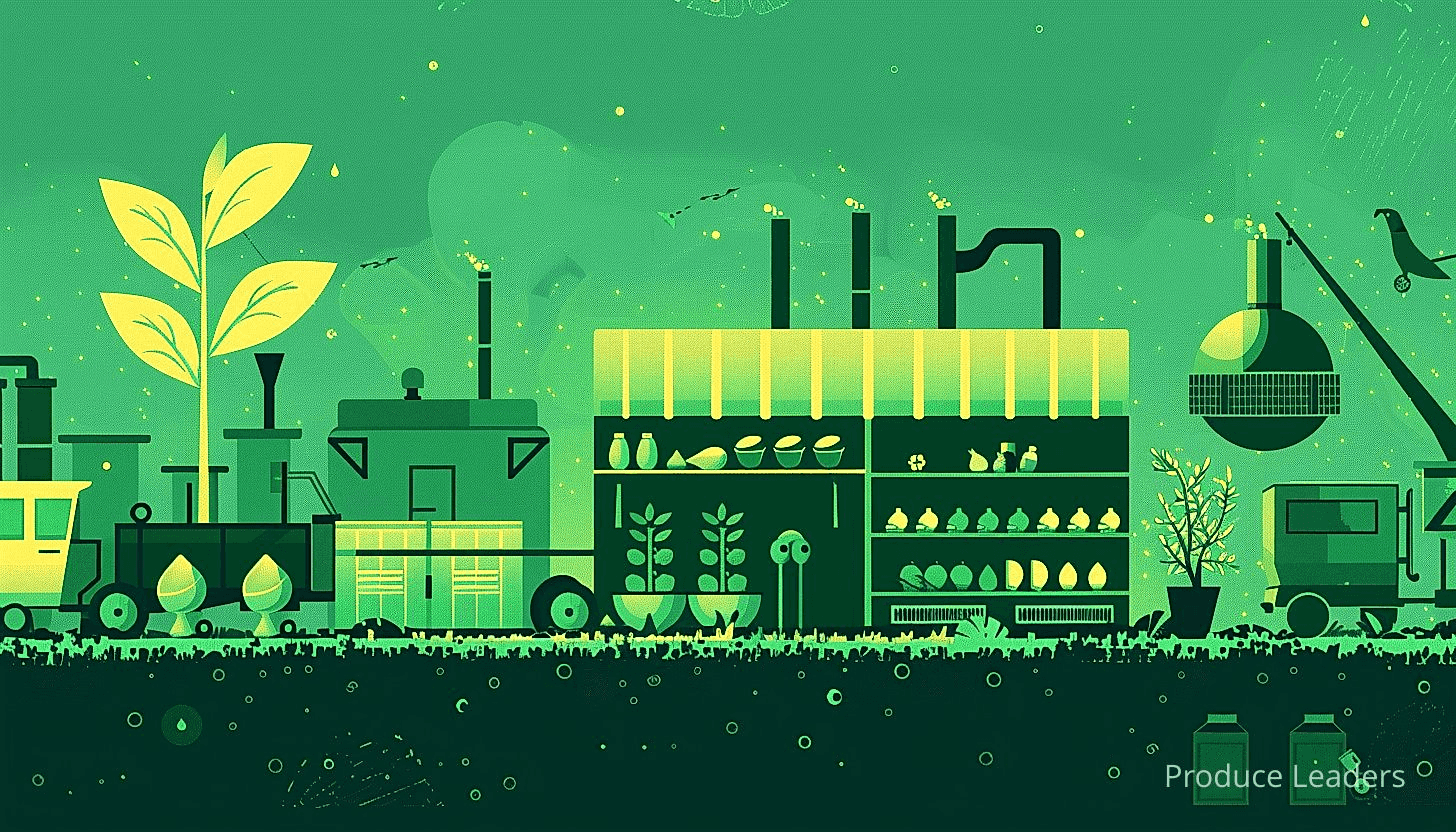
Knowing where your produce is at any given moment can make all the difference in ensuring it arrives in good condition. Avoiding unnecessary delays and handling is of utmost importance.
By implementing route optimization software, the driver can be guided on the fastest routes, reducing the time produce spent in transit.”
How beneficial do you think these tech advancements have been? Well, let’s explore.
Here are three pivotal areas where technology aids in increasing transportation efficiency:
- Real-time visibility, with automated tracking, reduces potential for produce loss.
- Route optimization software minimizes transit time.
- Usage of climate-controlled vehicles ensures the fresh produce maintains optimal quality.
Now, beyond the introduction of technology, ensuring transportation efficiency involves maintaining high standards for vehicle maintenance and operation.
Imagine a truck breakdown in the middle of a delivery. Sounds disastrous, doesn’t it? To prevent such scenarios, frequent vehicle inspections are crucial to maintaining efficiency.
Aside from technology and vehicle maintenance, establishing strong partnerships is also key to transportation efficiency. Are you aware of the impact of a good supplier and retailer relationship?
With improved communication between the farmer, supplier, and retailer, any potential issues can be resolved swiftly, ensuring there are no delays in the transportation of produce. An efficient supply chain importantizes the journey from seed to shelf.
Important: In the quest for transportation efficiency, a blend of high-tech solutions, rigorous vehicle maintenance, strong partnerships, and a thorough understanding of performance data are essential in ensuring a swift and seamless journey from farm to table.
Finally, measuring performance and monitoring data also contribute to maintaining and improving efficiency. When you know your metrics, can’t you make better decisions? With accurate data related to delivery times, the number of successful and failed deliveries, and reasons for delays, necessary adjustments can be made to improve outcomes.
In the quest for transportation efficiency, it’s clear that a blend of high-tech solutions, rigorous vehicle maintenance, strong partnerships, and a thorough understanding of performance data play important roles.
It indeed paints a clearer picture of the intricate journey from seed to shelf.
Arrival of Produce at Retail
In Short: Produce undergoes a thorough inspection process upon arrival at retail outlets, ensuring only undamaged and optimally ripe goods reach the customers. Retailers meticulously sort, categorize, and store the produce, enhancing the end consumer’s awareness of its journey from seed to shelf.
Once the produce has undergone its journey from seed to mature plant, harvest, and transportation, it reaches its ultimate destination – the retail outlet. The life of produce doesn’t stop at harvest, does it?
At these outlets, be it your local grocery stores, farmers markets, or supermarkets – retailers take in the fresh delivery. Now, do you ever wonder how these fresh goodies reach the shelves of these stores?
The produce received at the stores is first checked for its quality. It’s mainly to ensure that no damaged items or those past their prime slip through. Quality-check – important task, isn’t it?
And it’s not as straightforward as it may seem. Oftentimes, the fruits and veggies are sorted based on their ripeness. Do you envision a single tomato traveling down a conveyor belt, being scrutinized for its color and firmness?
You wouldn’t be far off. Presenting here are the steps taken by retailers to make sure that every customer gets the fresh produce they deserve:
- Checking for Damage – They inspect each product for any visible damages or bruises. Ever noticed that most fruits and veggies at the store look almost perfect?
- Sorting Based on Ripeness – Unripe, ripe, and overripe, everything is sorted. Isn’t this why you can find just the right avocado whenever you need one?
- Categorizing and Labeling – Produce is then categorized and labelled based on type, source, organic status, etc.
- Proper Storing – In order to maintain freshness, each item is stored in its optimal environment. Ever noticed how certain items are always in the fridge, while others rest at room temperature?
Once all these steps are successfully completed, the produce finally makes its way to the retail shelves. The hustle and bustle in the aisles start right away, don’t they?
Take a moment next time you reach for that crisp apple or vibrant bell pepper. It didn’t just simply appear there, did it?
It’s interesting to note the journey of your fresh produce, from a humble seed to the bright retail shelves. The journey surely gives us more reason to enjoy each crunch and every bite, doesn’t it?
Though it’s a common fact that educating consumers about this journey can further enforce the need for fair trade practices and respect for our hardworking farmers. Would you not agree?
Pro Tip: Always ensure the quality of your produce at retail outlets by checking for any visible damage or signs of over ripening, as proper storage and categorizing play a crucial role in maintaining their freshness.
Keep in mind, each piece of produce has not only traveled distances but also stood the test of time. There are meticulous planning, immense labor, and calculated decisions behind what seems like the simple act of seeing your favorite produce rest on the shelf.
Next time when you walk through the produce aisle, take a moment to appreciate the journey. Who knew shopping could offer such perspective, right?
Final Stop: The Retail Shelf
In Short: Fresh produce undergoes meticulous quality checks, sorting, and specialized packaging before gracing retail shelves. The final presentation, including visual merchandising, contributes significantly to a product’s appeal and ultimate sale.
When the freshly harvested produce completes its journey from the farmers’ fields, the next stop is often the retail shelf.
What does this transition entail?
The arrival of the produce on the retail shelf is no less significant than the journey it undertakes to reach there. The way produce is presented speaks volumes about its journey so far.
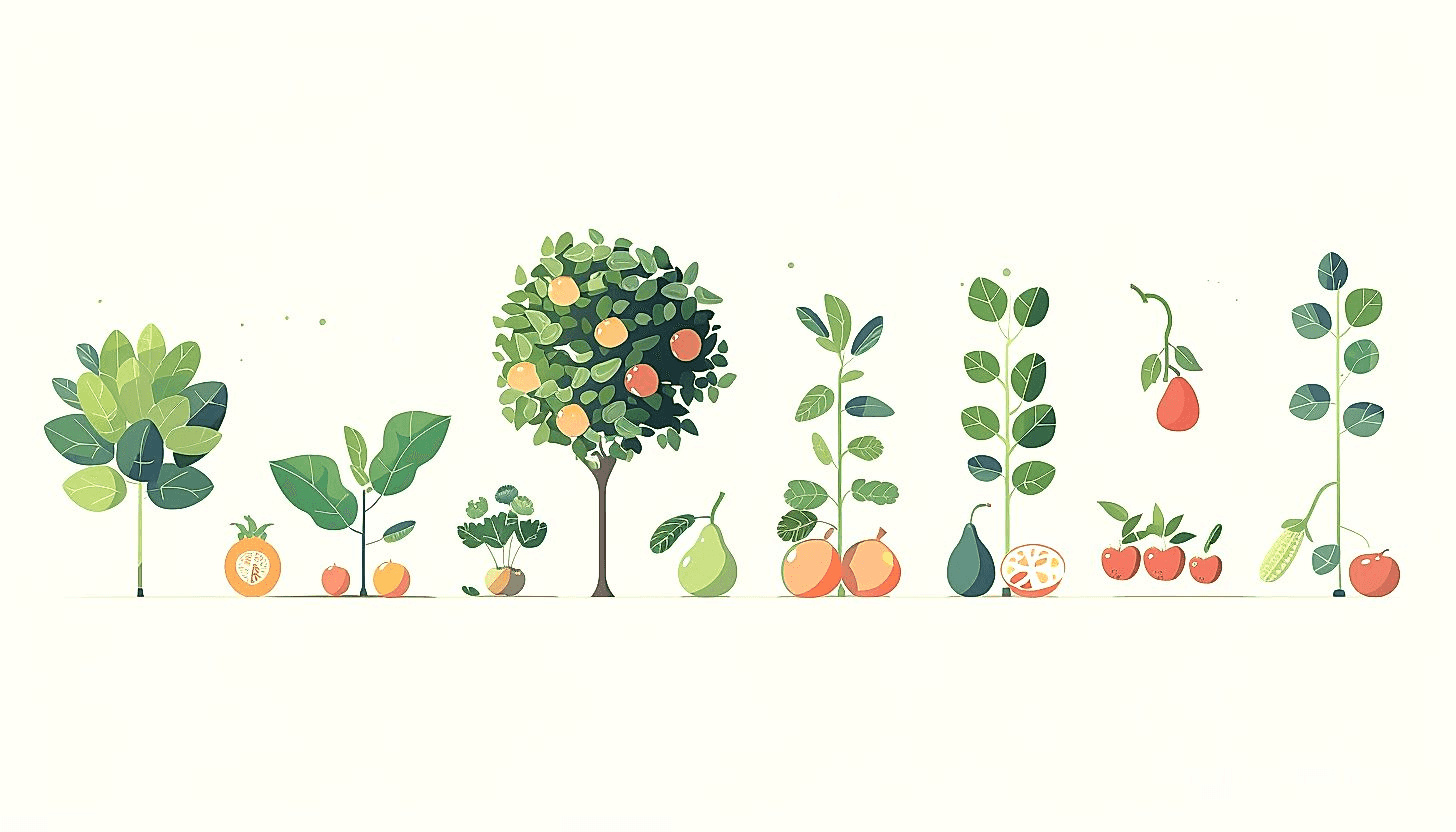
And how does the produce get to the retail shelf, you may wonder.
Before the produce can grace the retail shelves, it has to pass through a rigorous quality check and sorting process. Each piece is meticulously inspected and categorized based on its quality, size, and visual appeal.
Ever considered why the fruits and vegetables on the shop shelves look so perfect?
Similarly, behind this entire procedure, there lies a stringent selection criterion that ensures the customer gets only the best quality produce.
Only the pieces that pass this rigor can be deemed worthy of reaching the final destination – the retail shelf.
In addition to this, the produce is also prepared and packaged in a specific way for its journey to the retail outlet.
This is a crucial step in ensuring that the produce remains fresh, appealing, and ready for sale upon its arrival at the store.
Each type of produce requires a different kind of packaging and storage condition. Here is a brief overview of how some common produce is prepared for the retail shelf:
- Potatoes are typically stored in mesh bags to allow ventilation, maintaining their freshness.
- Apples are usually packed in cartons, with each individual apple nestled in a protective layer to prevent bruising.
- For leafy vegetables, it’s essential to ensure that they are carefully wrapped to retain their moisture and crispness.
Upon reaching the retail outlet, the store’s staff play a significant role in the final presentation of the produce on the shelves.
Their expertise in understanding what the buyer looks for in terms of quality, appeal, and freshness is crucial to the successful sale of the produce.
Further, visual merchandising plays a huge role in this final stage of the produce journey.
The display of the produce, the arrangement of different types, and the lighting all play crucial roles in making the produce appealing to the buyer.
Have you ever noticed how a well-organized produce section can be so visually pleasing?
It’s not a coincidence, but an intentional effort aimed at attracting customers and promoting sales.
Well, the journey of the produce does not end at the retail shelf.
Important: Before the freshly harvested produce can grace the retail shelves, it has to pass through a rigorous quality check and sorting process, where each piece is meticulously inspected and categorized based on its quality, size, and visual appeal.
It awaits its last voyage – to reach the homes of consumers, to be a part of their meals, adding color, texture, and flavor to their plates.
Let me tell you, the next time you pick a piece of fruit or a vegetable from the retail shelf, remember the fascinating journey it has made to reach its final stop.
The Bottom Line
The journey of produce truly begins with the initial planting and nurtures, setting the foundation for the crop’s progression from seed to shelf.
The process of plantation plays an integral role, influencing the overall quality and yield of the harvested produce.
Timely harvesting is key, as it ensures the importantity and nutritional integrity of the crop, setting the stage for its journey from the field to the market.
Post-harvest handling is a delicate stage that requires profound care to prevent losses and maintain the quality of the produce.
Proper storage is important for preserving the produce’s quality, extending its shelf life, and preventing the growth of spoilage organisms.
Controlled storage conditions are essential for maintaining produce quality and extending shelf life, thus lessening waste and increasing profitability.
Transportation is a crucial stage in the produce journey, with significant impacts on the quality, freshness, and accessibility of the produce to consumers.
Efficiency in transportation is important for ensuring produce reaches retailers in a timely manner and in top condition, revealing the importance of optimal distribution systems.
The products, once they arrive at the retail level, serve as a testament to the journey they have completed, demonstrating the effectiveness and efficiency of the seed to shelf process.
Lastly, the retail shelf is the final stop on the journey from seed to shelf, where high-quality produce awaits consumers, all thanks to the intricate and well-coordinated journey it has completed.

